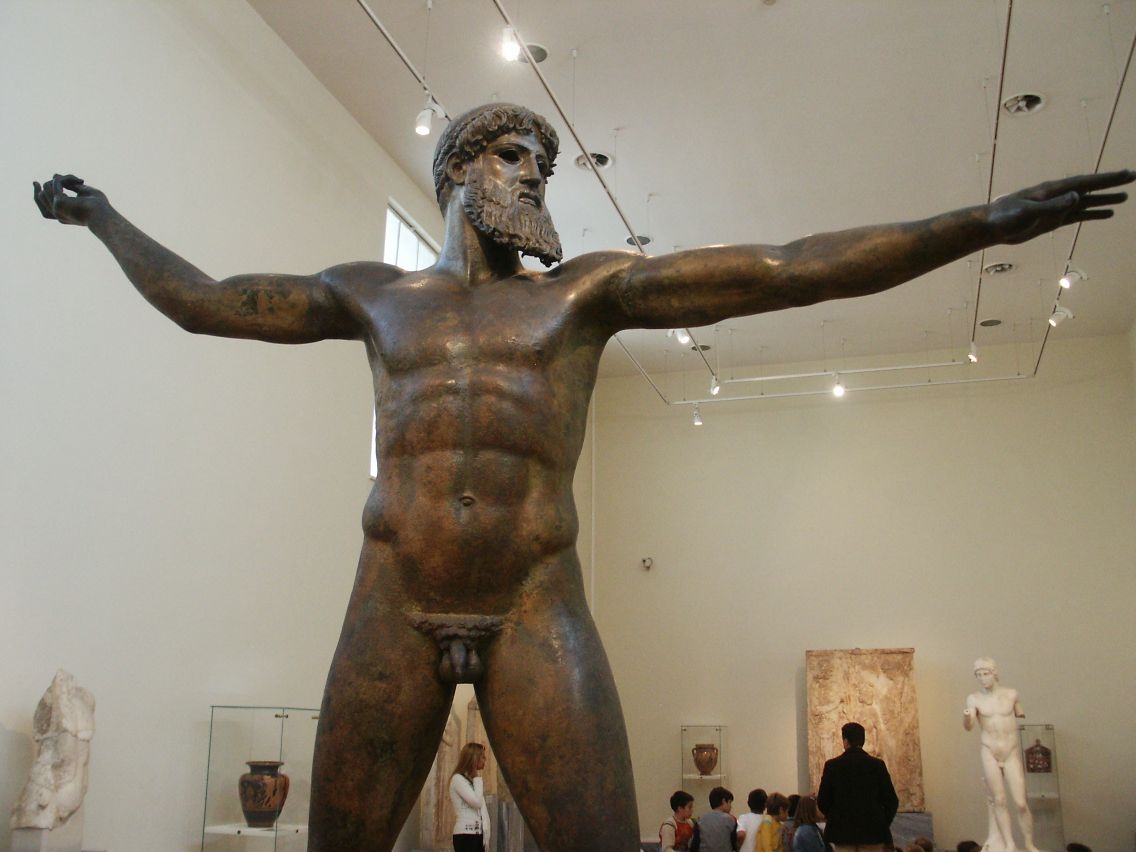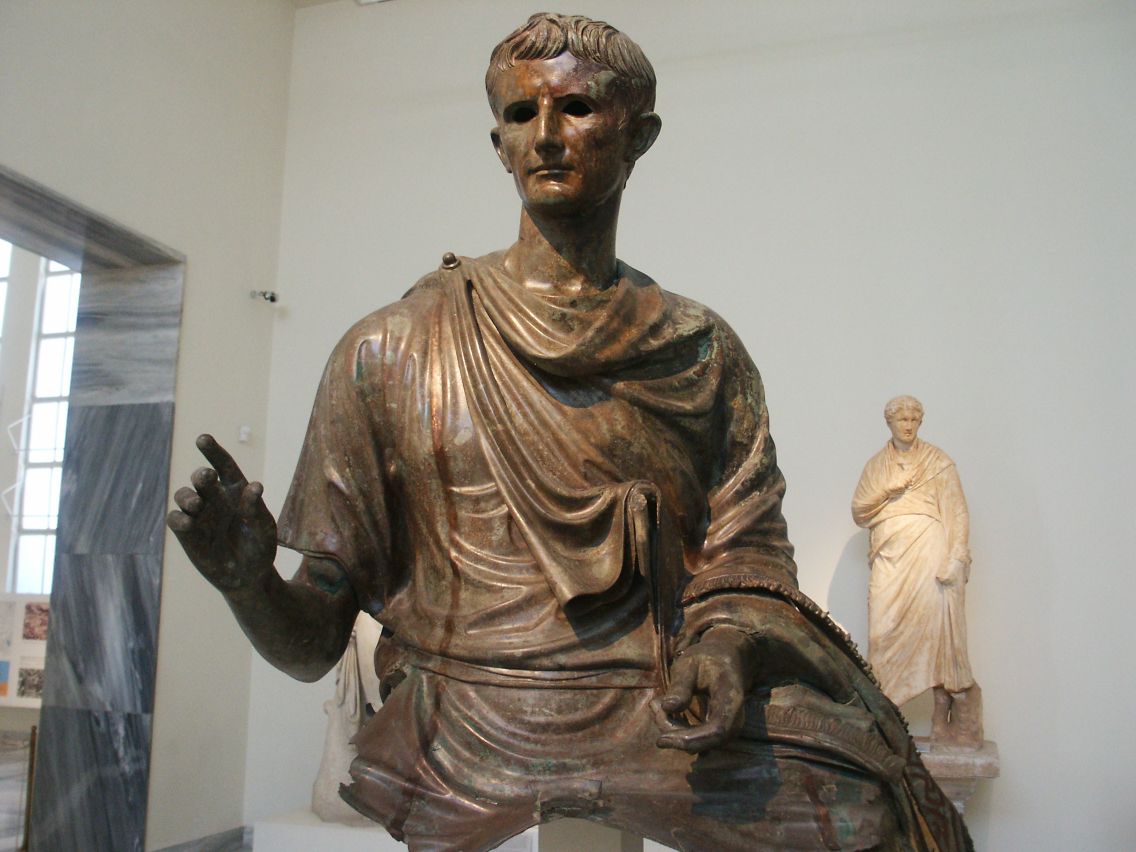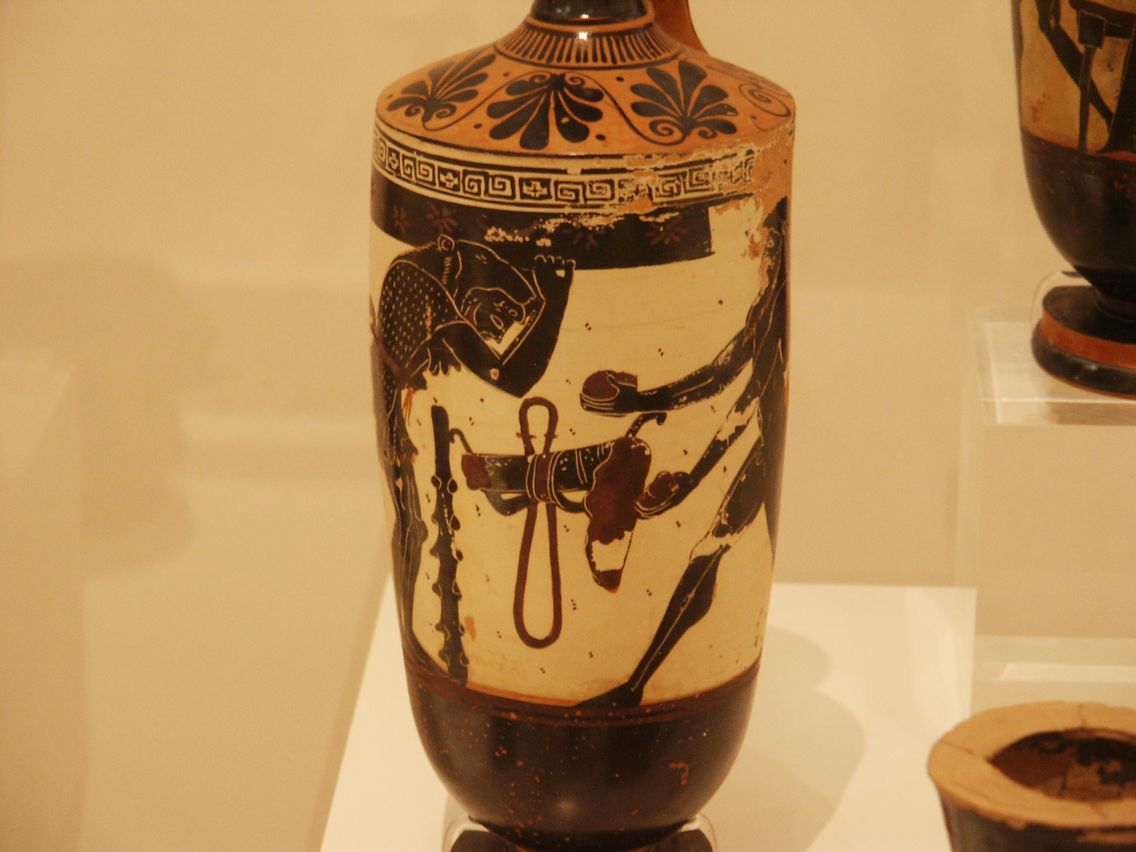National Archaeological Museum of Athens

The museum in Athens is one of the great museums of the world
Here Sonya is standing by a "Kouros" ( male youth ) statue ( 600 BC ) which was located at Poseidons temple at Sounion

This incredible status is a "Kore" ( female ) statue called Phrasikleia
It dates from 550 BC and was a grave marker of the beautiful woman whose untimely death caused much sorrow
In the right bottom of the image there is a picture showing how it would have been painted
It is extremely rare for a statue this old to have retained some colour as this has done

A close up view of the incredible detail of the kora Phrasikleia
We felt that this statuse was perhaps the most impressive in the whole museum

This is a bronze statue of either Zeus or Poseidon, no one knows if his hand should have a Thunderbolt or Trident
Dating from 460 BC this statue was found intact on the sea floor at Euboea

Bronze statue of Roman Emperor Octavian Augustus who ruled the Roman Empire from 31 BC to 14 AD

An impressive status of Zeus, most powerful of all the Gods

This vase depicts a scene from the Odyssey. In this scene Odysseus is lashed to the rigging of the ship
because no one can resist the songs of the Sirens and this prevents him from following their call
Vases like these come from the Classical period of Ancient Greece and refer to stories from the earlier Archaic period

This vase has a scene from the mythological Labours of Herakles ( Hercules )
In this labour Hercules was challenged to retrieve Golden Apples of the Hesperides
Hercules needed the help of Atlas, who was condemmed to forever hold up the sky
Hercules offered to hold up the sky for awhile if Atlas would retrieve the apples
In this scene, Hercules, with his lion's head helmet is holding up the sky while Atlas offers him the apples

This is the famous Mask of Agamemnon discovered at Mycenae in 1876
Although this mask is named after Agamemmon, it is actually from 1500 BC and predates the life of Agamemmon

This statue is from 100 BC and shows Aphrodite ( Goddess of love ) fighting off a Satyr with her slipper
Eros, the primordial God of lust, love and Intercouse is there as the small figure on Aphrodite's shoulder

This vase depicts Theseus killing the minotaur
Each year Athens was required to send seven boys and seven girls to Minos, the king of Crete
They were then thrown into the Labyrinth where the Minotaur lived to be eaten by him
One year the hero Theseus went along as one of the boys and then slew the Minotaur

This is a grave stele ( grave marker ) from the early 4th century BC
It depicts Demetrios, an Athenian Hoplite gazing sorrowfully towards
the prow of a Trireme ship and the sea where he lost his life in a Navel Battle
I was very moved by this piece as it shows the timeless human sorrow of losing a loved one
HOME












